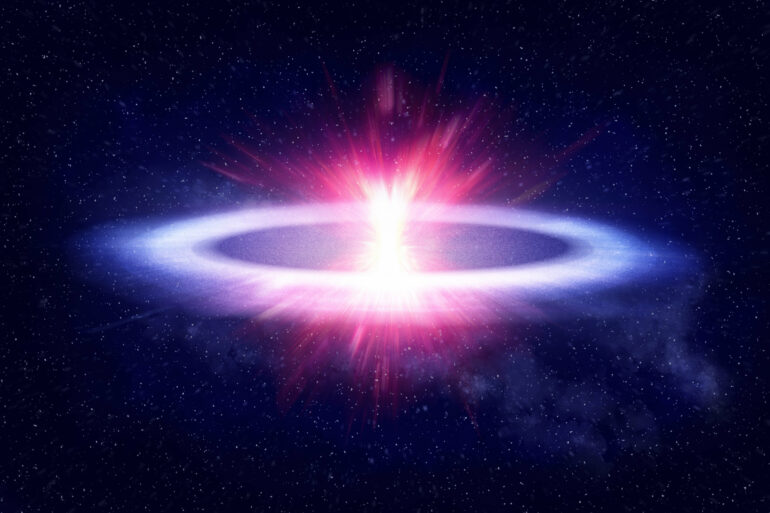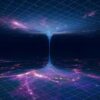Having more tools helps; having the right tools is better. Utilizing multiple dimensions may simplify difficult problems—not only in science fiction but also in physics—and tie together conflicting theories.
For example, Einstein’s theory of general relativity—which resides in the fabric of space-time warped by planetary or other massive objects—explains how gravity works in most cases. However, the theory breaks down under extreme conditions such as those existing in black holes and cosmic primordial soups.
An approach known as superstring theory could use another dimension to help bridge Einstein’s theory with quantum mechanics, solving many of these problems. But the necessary evidence to support this proposal has been lacking.
Now, a team of researchers led by Kyoto University is exploring ‘de Sitter space’ to invoke a higher dimension to explain gravity in the expanding early universe. They have developed a concrete method to compute correlation functions among fluctuations on expanding universe by making use of holography.
“We came to realize that our method can be applied more generically than we expected while dealing with quantum gravity,” says Yasuaki Hikida, from the Yukawa Institute for Theoretical Physics.

Witten diagrams for three- and four-point functions. The exchange diagrams may be expressed as products of three-point functions via split representation of bulk-to-bulk propagators. © Physical Review Letters (2022). DOI: 10.1103/PhysRevLett.129.061601
Dutch astronomer Willem de Sitter’s theoretical models describe space in a way that fits with Einstein’s general theory of relativity, in that the positive cosmological constant accounts for the expansion of the universe.
Starting with existing methods for handling gravity in anti-de Sitter space, Hikida’s team reshaped them to work in expanding de Sitter space to more precisely account for what is already known about the universe.
“We are now extending our analysis to investigate cosmological entropy and quantum gravity effects,” adds Hikida.
Although the team’s calculations only considered a three-dimensional universe as a test case, the analysis may easily be extended to a four-dimensional universe, allowing for the extraction of information from our real world.
“Our approach possibly contributes to validating superstring theory and allows for practical calculations about the subtle changes that rippled across the fabric of our early universe.”
The study is published in the journal Physical Review Letters.
More information:
Heng-Yu Chen et al, Three-Dimensional de Sitter Holography and Bulk Correlators at Late Time, Physical Review Letters (2022). DOI: 10.1103/PhysRevLett.129.061601
Citation:
Seeing is more than believing: Exploring ‘de Sitter space’ to explain gravity in the expanding early universe (2023, March 31)



